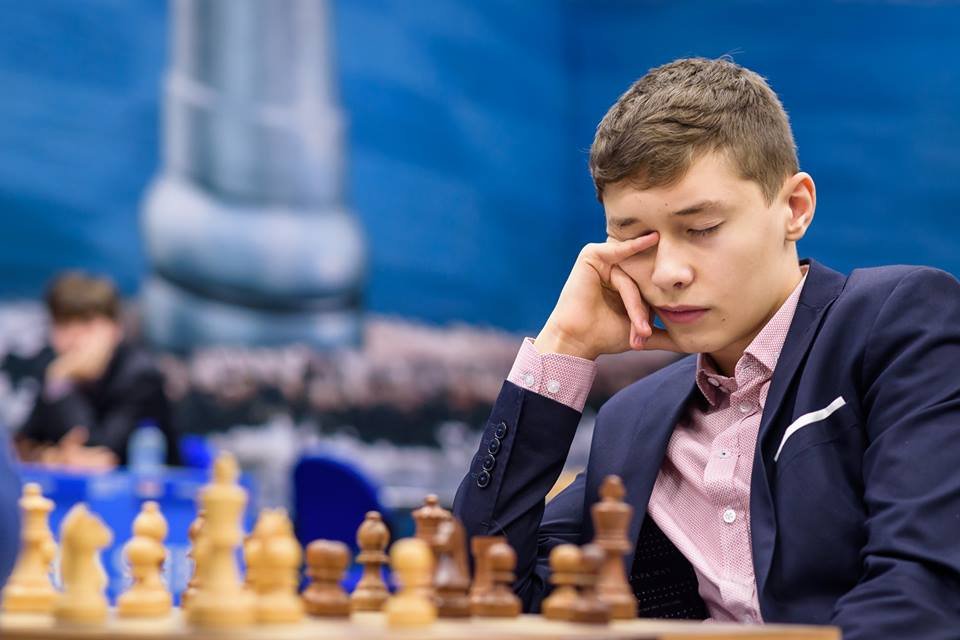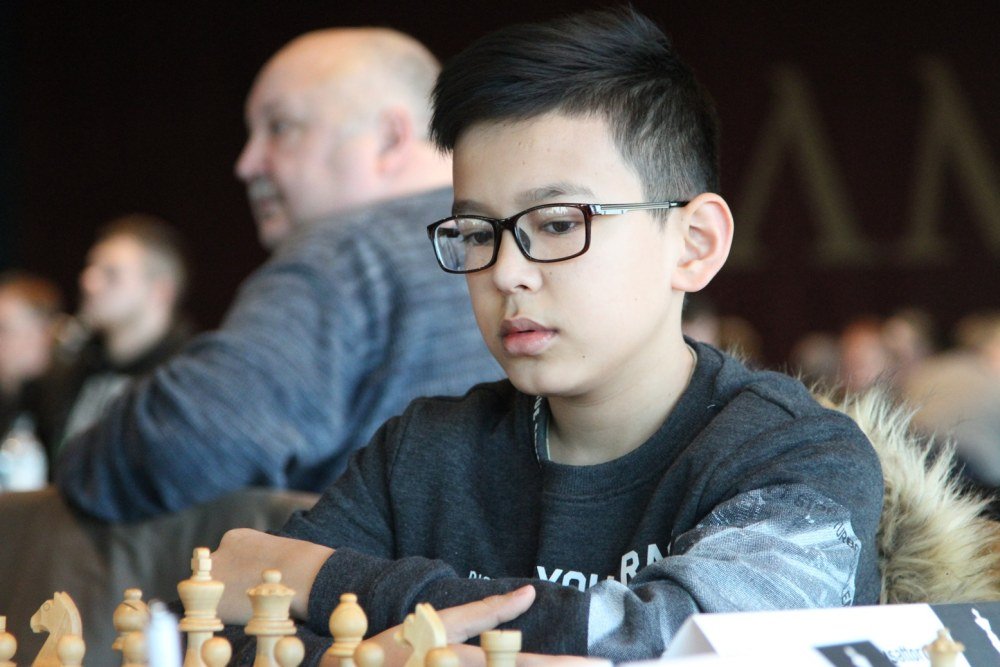.jpeg)

.jpeg)
Chess is more fun if you can keep your fingers crossed for some players, and for this purpose, we look at the tournament ahead for the youngest four players at the World Cup. Do any of them have a realistic route to the Candidates Tournament? The group is led by four juniors:
Alireza Firouzja, the Iranian superstar of the year 2019 and the number three junior in the world. The Russian Andrey Esipenko is currently number ten on the junior list, and one of a whopping 28 players from the host nation. Nihal Sarin got a presidential wildcard for his ticket and is currently number 14 junior by rating. Lastly, Uzbek Nodirbek Abdusattarov made his World Cup debut as the current number 16 among the juniors. But he exited in the first round tiebreak.

Firouzja (born 18 June 2003), with his rating of 2702, was the clear favourite in the first round against Armenian Pashikian (2599) | Photo: Fiona Steil-Antoni
It took Alireza Firouzja two years to improve from 2500 to 2700. So far, only Wei Yi managed to surpass that. Fabiano Caruana and Magnus Carlsen needed a little more than three years for the same rating leap, although back then the rating lists did not come out monthly. For teenagers, a year can make a big difference, and this move could be an indication of a long-term future among the absolute world top (currently 2750+).
Firouzja had a rating of 2618 on the January 2019 list. Since then, he has achieved some remarkable results and took the next leg up to 2702: He won the Iranian Championship in January with 9 out of 11, kicking off a string of strong performances. Along the way his score against grandmaster colleagues in the first two months of the year was a sensational 11½ out of 14.
Other standout performances include 7 out of 9 at the World Team Championship where, on the fourth board, he was beaten by another top flyer of the year: Vladislav Artemiev. After that, three more Opens with 7 out of 9 (Sharjah), Reykjavik (7 out of 9) and Grenke (actually 7 out of 8 plus a controversial forfeit). Alongside Nihal at the Asian Championship, Alireza with 6 out of 9. Incidentally, Nihal was first in front of Alireza in the Asian Blitz Championship. In the Turkish Team Championship Firouzja followed up with a score of 11½ out of 13 games on the third board. (By the way, Nihal played for his team on board 1.) Firouzja's score against other grandmasters in 2019 heading into the World Cup was 38½ out of 53 games — 72.6 percent!
In Khanty-Mansiysk, he took care of his first round opponent in the classical games.
Pashikian had to go into grovel mode with 31...fxe5 32.♕xd5+ ♛xd5 33.♖xd5 exf4 34.♖xf4 when White is much better but still has work do to. In the game 31...♞xc5 allowed 32.♗xf6 and Firouzja's bishop pair coupled with the open g-file led to a Black resignation in just sixe more moves.
Firouzja faces Daniil Dubov (2699) in the second round — a draw in game 1 today. Ding Liren likely will await the winner.
Andrey Esipenko (born March 22, 2002, 2624) has an even tougher guantlet to run, but he bounded over the first hurdle — former FIDE World Champion Ruslan Ponomariov (2675) — winning with Black in the first classical game.
Esipenko faces his countryman Peter Svidler (2729) in the second round and Hikaru Nakamura (2745) or Liviu-Dieter Nisipeanu would follow next.

Andrey Esipenko | Photo: Alina l'Ami
Nihal Sarin (born July 13, 2004), rated 2610 started by knocking out the number 1 of Peru, the young Jorge Cori (2676) by a 2:0 sweep.
The first game was a full-fledged battle with bishops of opposite colours:
41...Bxf2! The only chance for Cori. Taking the bishop would lead to a perpetual check draw. 42.Rf3 Qg1+ looks scary for White, but Nihal had it correctly calculated. 43.Kh3 Qh1+ 44.Kg4 and Black had nothing better than 44...Qxh5 going into an endgame which is winning for White thanks to his passed a-pawn.
The second game was a near miniature win with Nihal getting a vicious kingside attack with Black.
27...♜xc4! Can you calculate the win if White takes the rook?
28.♔h2 ♞6d5 and White suffers heavy material losses.

Nihal Sarin during Round 1 | Photo: khantymansiysk2019.fide.com
Nihal has back-to-back Azerbaijani players in his path — Eltaj Safarli scored an upset win over Sam Shankland in the first round tiebreaks, and in round three Shakriyar Mamedyarov (2767) will likely await.
Nodirbek Abdusattorov (born September 18, 2004, 2608) crossed swords with Russian Maxim Matlakov (2716) and will say good by to Khanty-Mansiysk after losing his rapid tiebreak.

Nodirbek Abdusattorov | Photo: Gerd Densing
Professionals have the advantage that their opponents generally try to gain advantage with White. In addition, most games by grandmasters are recorded and therefore known. It is different with amateurs who are often on their own from the first moves. The consequence of this information advantage is that you can prepare better for a professional and the actual competition often begins in the middlegame. The downside is that most ambitious players have a well-groomed opening repertoire with particular variations.
Did you know...
You can now train with the same suped-up engine as the pros do: Fat Fritz!